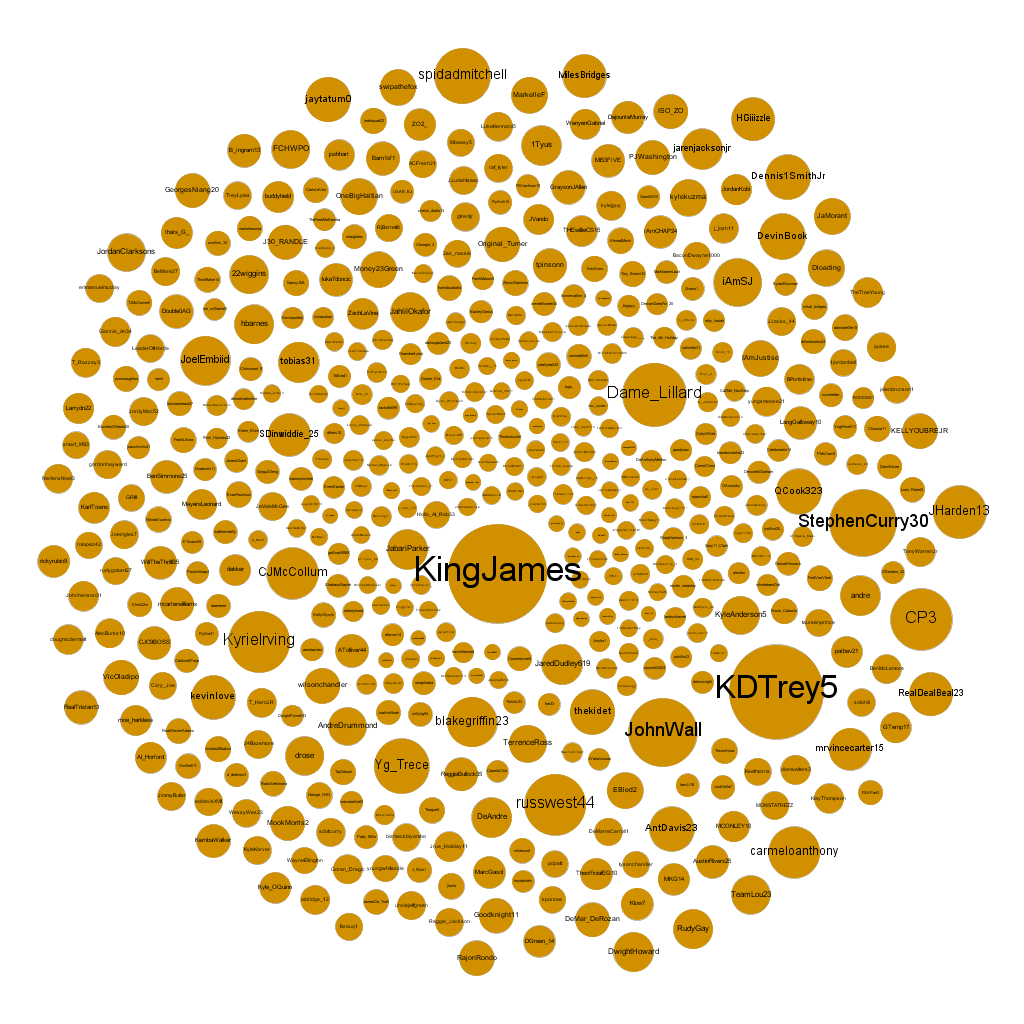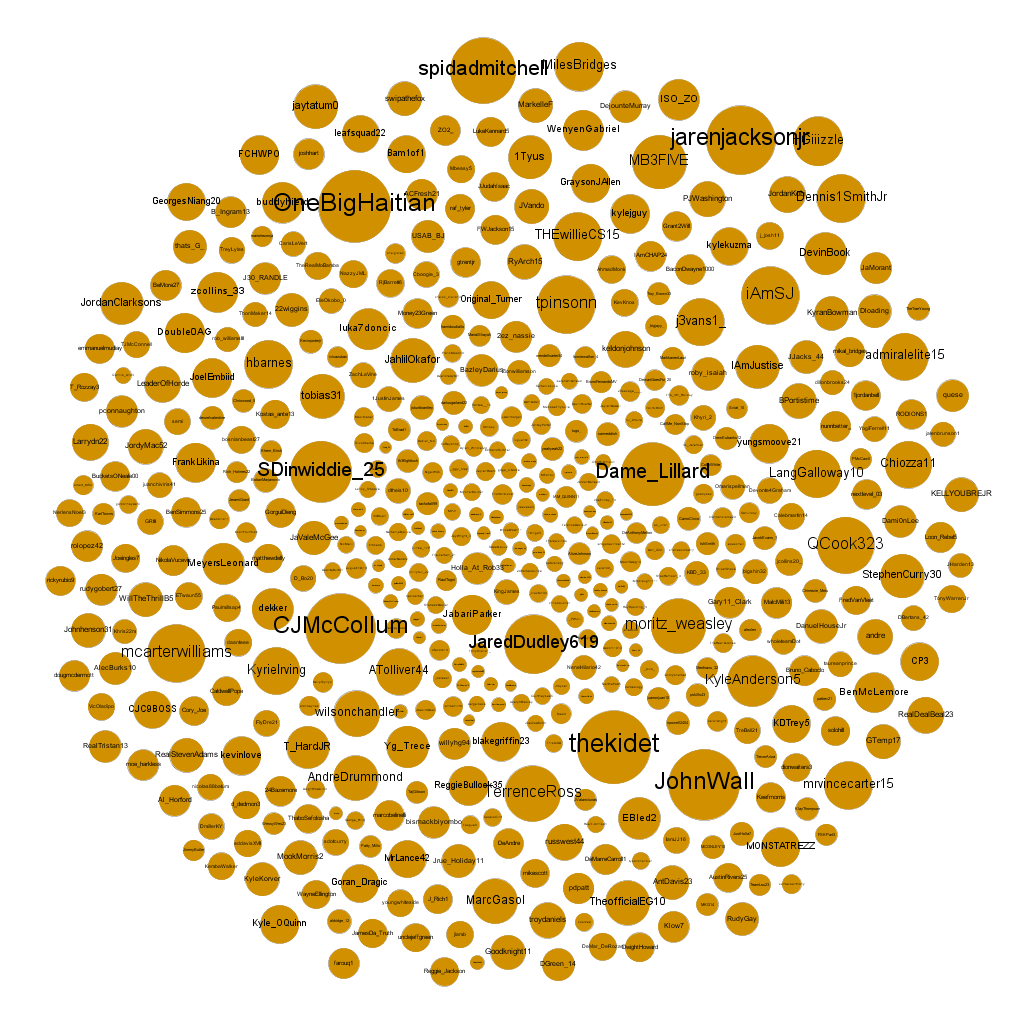I wanted to write a blog post about something related to the NBA, given that the finals are taking place at the moment. Rather than go with a dataset that related to on court data or the game itself, I found an interesting article that analyzes how NBA players interact with each other on Twitter. The author makes use of many properties of graphs that we learned about in class, including the in-degree (and out-degree) of a node, as well as the shortest path between two nodes.
First, he sets up the network by defining the meaning of a node and an edge. This is pretty trivial, each node represents the profile of a player, while a (directed) edge exists between player A and B if A follows B.
Next, the author visualises the network by removing all the edges and making the nodes larger in proportion to their in-degree. This allows us to gain some insights as to which players are the most followed:

From looking at the visualization, we can see that Lebron James and Kevin Durant are clearly a tier above the rest, while a second tier exists including players like Kyrie Irving. Damian Lillard, and Steph Curry. All the other players have about the same number of followers. While visualizing based on in-degree can help us get a sense of who the most followed players are, the author also visualizes based on out-degree:

I think this visualization is a lot more interesting. For the in-degree, it was pretty obvious why the larger bubbles were larger: the more popular players had more followers. For the out-degree, there seem to be players that are following many others for a variety of reasons. For example, John Wall might be following many other players since he’s been injured for the better part of two years now and has nothing better to do than be on Twitter all day. Damian Lillard too, follows a great number of players. Is it because he raps on SoundCloud on the side and is trying to promote his brand?
Finally, the author takes a look at the average length of the shortest path between two players, which ends up being 2. This means that the average NBA player will usually know a player who follows any other player, which I found pretty surprising.
When I first clicked on the article, I thought the NBA would be comprised of 30 giant SCC’s: one for each team. I didn’t expect so many players to follow and be followed by players who aren’t their teammates, but it seems like a more tight-knit community (at least on Twitter) than I thought.
Works Cited
Ogeleka, Chukwubueze Hosea. Social Network Analysis of Current NBA Players on Twitter. 16 June 2020, medium.com/analytics-vidhya/social-network-analysis-of-current-nba-players-on-twitter-b3fb9a741806.